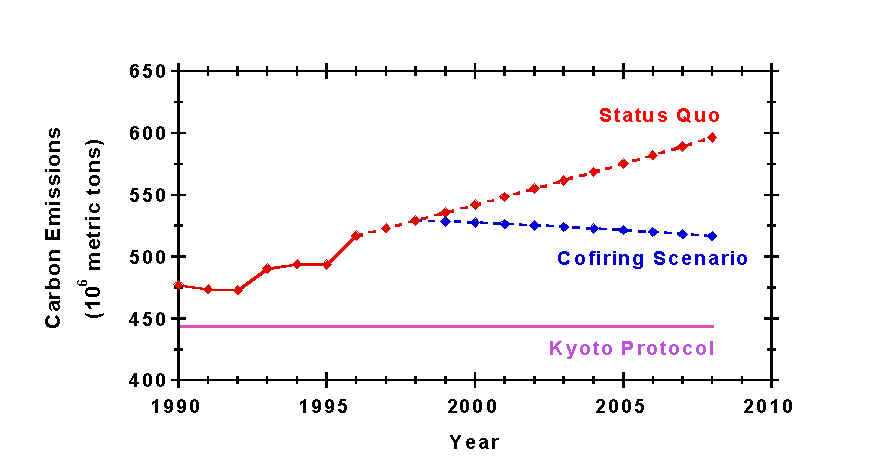|
|
| |

             
|
Surface Warming
Carbon Dioxide Sources
Upper Atmosphere Warming | |
The impacts of cofiring coal with biomass residues could substantially contribute to
reduction in CO2 emissions from the power generation sector. Here we use
the Kyoto protocol as a figure of merit in evaluating this contribution and come to the
following two conclusions:
 | Cofiring has a larger potential contribution to CO2 reduction than most other
options for the power sector. |
 | Even at the maximum conceivable cofiring rate, cofiring only resolves a portion of the
problem. Cofiring must be implemented with other approaches to provide a meaningful,
long-term solution. |

| |
|
|
| |
|
|

